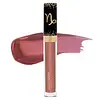What's inside
What's inside
 Key Ingredients
Key Ingredients

 Benefits
Benefits

 Concerns
Concerns

 Ingredients Side-by-side
Ingredients Side-by-side

Cetyl Ethylhexanoate
EmollientPolybutene
Diisostearyl Malate
EmollientTriisostearyl Citrate
EmollientOleic/Linoleic/Linolenic Polyglycerides
EmollientCalcium Sodium Borosilicate
Triheptanoin
Skin ConditioningSilica Dimethyl Silylate
EmollientSilica
AbrasiveHydrogenated Polycyclopentadiene
Hydrogenated Styrene/Isoprene Copolymer
Helianthus Annuus Seed Oil
EmollientTrihydroxystearin
Skin ConditioningPassiflora Edulis Seed Oil
EmollientPhenoxyethanol
PreservativeSorbic Acid
PreservativeArgania Spinosa Kernel Oil
EmollientMacadamia Integrifolia Seed Oil
Skin ConditioningSchinziophyton Rautanenii Kernel Oil
EmollientEthylhexylglycerin
Skin ConditioningTocopheryl Acetate
AntioxidantTocopherol
AntioxidantPentaerythrityl Tetra-Di-T-Butyl Hydroxyhydrocinnamate
AntioxidantCocos Nucifera Oil
MaskingTin Oxide
AbrasiveGlycine Soja Oil
EmollientTitanium Dioxide
Cosmetic ColorantMica
Cosmetic ColorantIron Oxides
CI 77492
Cosmetic ColorantCI 77499
Cosmetic ColorantCetyl Ethylhexanoate, Polybutene, Diisostearyl Malate, Triisostearyl Citrate, Oleic/Linoleic/Linolenic Polyglycerides, Calcium Sodium Borosilicate, Triheptanoin, Silica Dimethyl Silylate, Silica, Hydrogenated Polycyclopentadiene, Hydrogenated Styrene/Isoprene Copolymer, Helianthus Annuus Seed Oil, Trihydroxystearin, Passiflora Edulis Seed Oil, Phenoxyethanol, Sorbic Acid, Argania Spinosa Kernel Oil, Macadamia Integrifolia Seed Oil, Schinziophyton Rautanenii Kernel Oil, Ethylhexylglycerin, Tocopheryl Acetate, Tocopherol, Pentaerythrityl Tetra-Di-T-Butyl Hydroxyhydrocinnamate, Cocos Nucifera Oil, Tin Oxide, Glycine Soja Oil, Titanium Dioxide, Mica, Iron Oxides, CI 77492, CI 77499
Methyl Hydrogenated Rosinate
PerfumingDimer Dilinoleyl Dimer Dilinoleate
EmollientPolyglyceryl-2 Triisostearate
EmulsifyingPolyglyceryl-10 Decaisostearate
EmollientJojoba Esters
EmollientPolyglyceryl-3 Beeswax
EmulsifyingGlyceryl Behenate/Eicosadioate
EmollientEthylhexyl Palmitate
EmollientDipalmitoyl Hydroxyproline
Skin ConditioningMenthoxypropanediol
MaskingParfum
MaskingSynthetic Fluorphlogopite
Silica
AbrasivePrunus Avium Seed Oil
EmollientEthyl Vanillin
MaskingTocopherol
AntioxidantTrihydroxystearin
Skin ConditioningCapsicum Frutescens Fruit Extract
Skin ConditioningTin Oxide
AbrasiveSodium Hyaluronate
HumectantGlucomannan
Skin ConditioningCI 77891
Cosmetic ColorantMethyl Hydrogenated Rosinate, Dimer Dilinoleyl Dimer Dilinoleate, Polyglyceryl-2 Triisostearate, Polyglyceryl-10 Decaisostearate, Jojoba Esters, Polyglyceryl-3 Beeswax, Glyceryl Behenate/Eicosadioate, Ethylhexyl Palmitate, Dipalmitoyl Hydroxyproline, Menthoxypropanediol, Parfum, Synthetic Fluorphlogopite, Silica, Prunus Avium Seed Oil, Ethyl Vanillin, Tocopherol, Trihydroxystearin, Capsicum Frutescens Fruit Extract, Tin Oxide, Sodium Hyaluronate, Glucomannan, CI 77891
 Reviews
Reviews

Alternatives
Ingredients Explained
These ingredients are found in both products.
Ingredients higher up in an ingredient list are typically present in a larger amount.
Silica, also known as silicon dioxide, is a naturally occurring mineral. It is used as a fine, spherical, and porous powder in cosmetics.
Though it has exfoliant properties, the function of silica varies depending on the product.
The unique structure of silica enhances the spreadability and adds smoothness, making it a great texture enhancer.
It is also used as an active carrier, emulsifier, and mattifier due to its ability to absorb excess oil.
In some products, tiny microneedles called spicules are made from silica or hydrolyzed sponge. When you rub them in, they lightly polish away dead skin layers and enhance the penetration of active ingredients.
Learn more about SilicaTin Oxide is an inorganic oxide used to add opacity and volume to a product. In nature, it is already found in mineral form. The main ore of tin is an opaque and shiny mineral called casseterite.
Tin Oxide helps remove translucency in a product, or make it more opaque. Besides adding opacity, tin oxide is used for bulking to add volume.
Tocopherol (also known as Vitamin E) is a common antioxidant used to help protect the skin from free-radicals and strengthen the skin barrier. It's also fat soluble - this means our skin is great at absorbing it.
Vitamin E also helps keep your natural skin lipids healthy. Your lipid skin barrier naturally consists of lipids, ceramides, and fatty acids. Vitamin E offers extra protection for your skin’s lipid barrier, keeping your skin healthy and nourished.
Another benefit is a bit of UV protection. Vitamin E helps reduce the damage caused by UVB rays. (It should not replace your sunscreen). Combining it with Vitamin C can decrease sunburned cells and hyperpigmentation after UV exposure.
You might have noticed Vitamin E + C often paired together. This is because it is great at stabilizing Vitamin C. Using the two together helps increase the effectiveness of both ingredients.
There are often claims that Vitamin E can reduce/prevent scarring, but these claims haven't been confirmed by scientific research.
Learn more about TocopherolThis ingredient comes from Hydroxystearic Acid, a fatty acid, and glycerin. It is used to thicken oils.
Due to its fatty acid content, it is a natural emollient.
Creating trihydroxystearin involves using a chemical reaction between hydrogen and castor oil.
This ingredient may not be Malassezia folliculitis safe.
Learn more about Trihydroxystearin